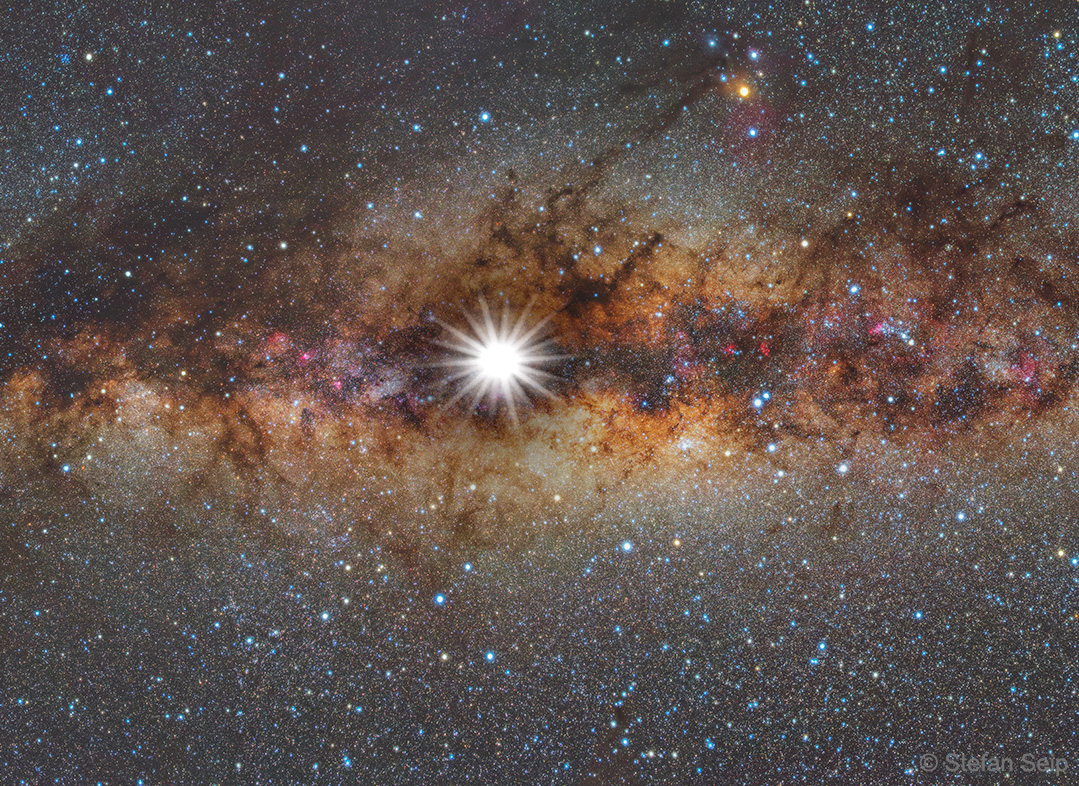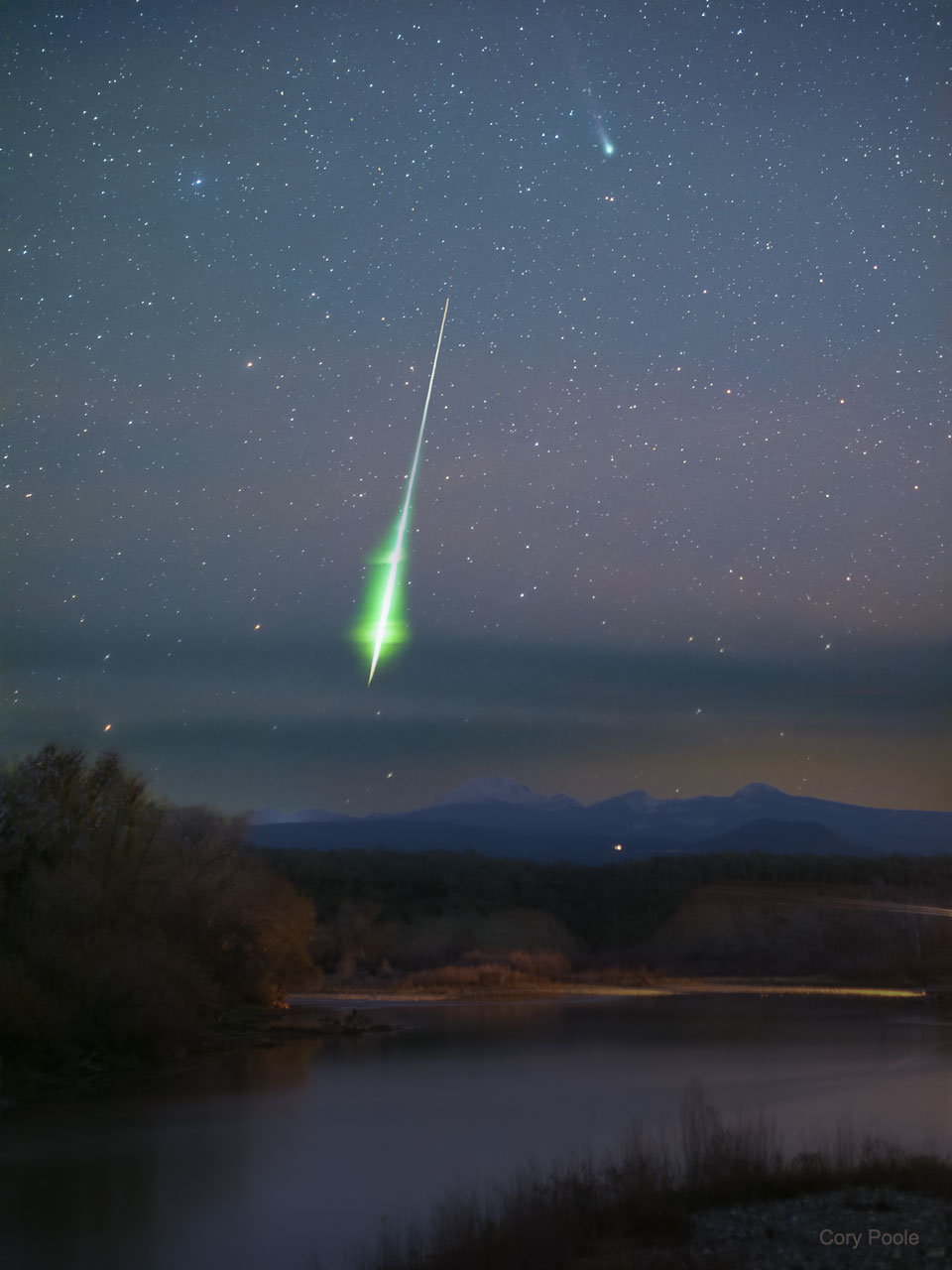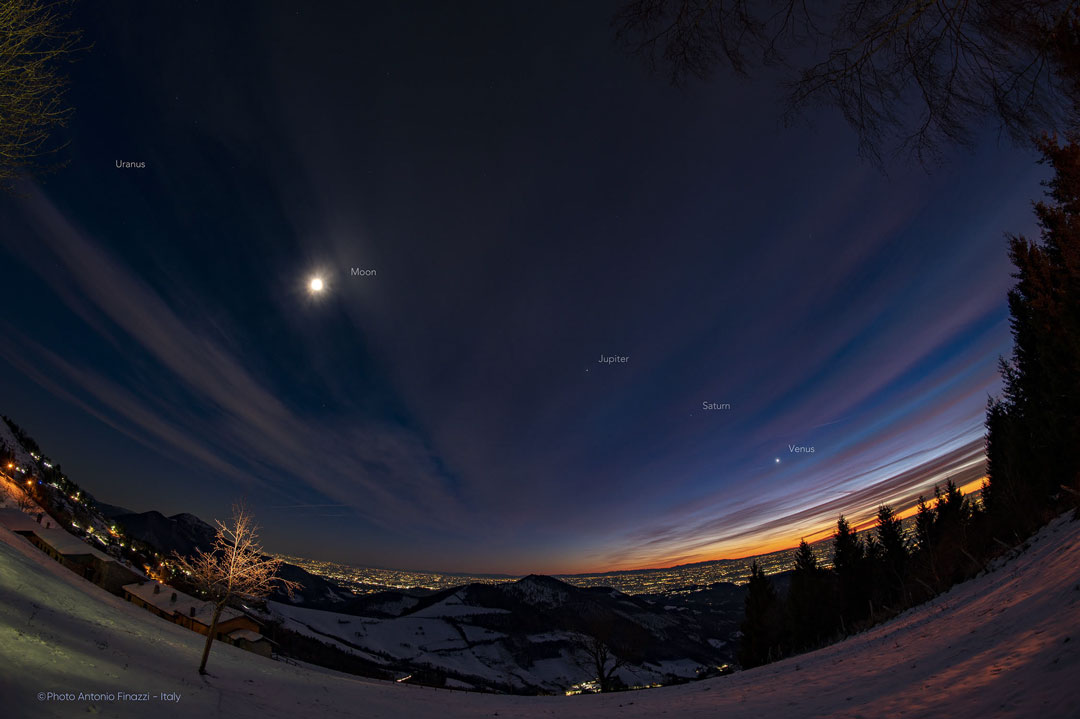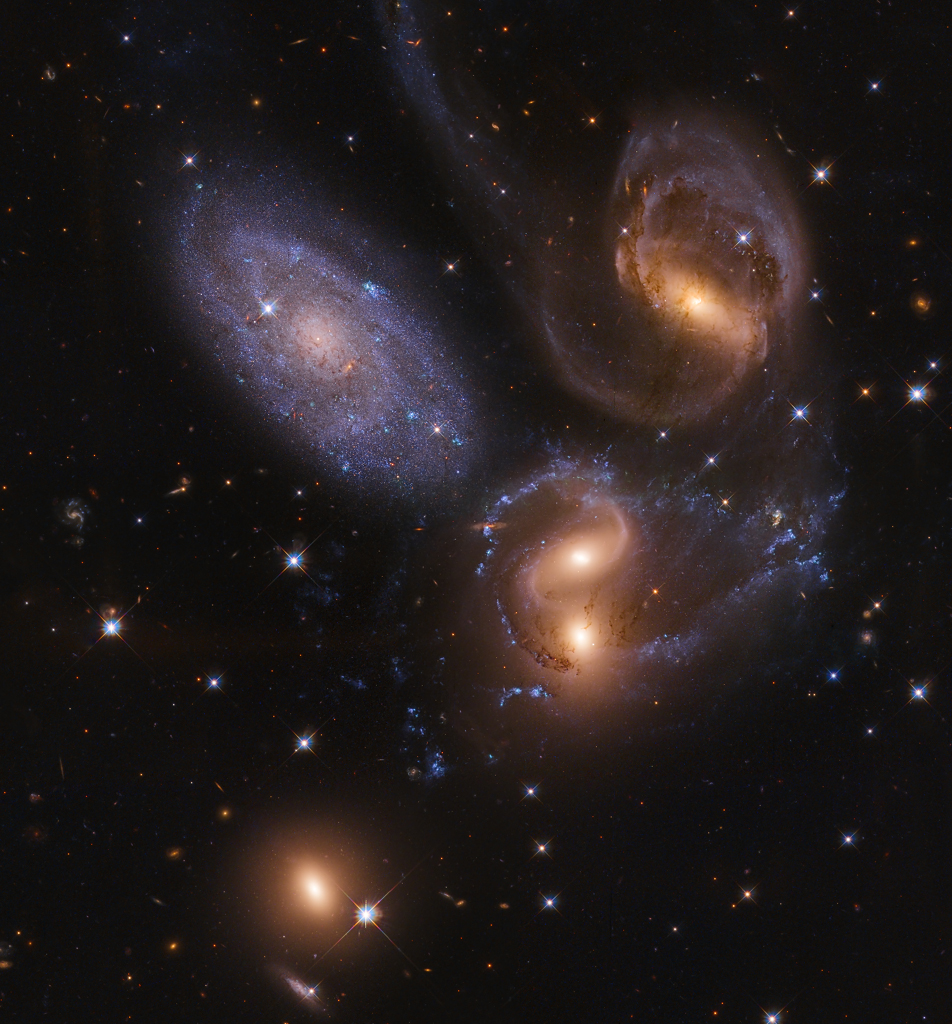Nombre total de pages vues
21/12/2021
ASTRONOMY - Solstice Sun and Milky Way
2021 December 21
Composite Image Credit & Copyright: Stefan Seip (TWAN)
Explanation: Welcome to December's solstice, first day of winter in the north and summer for the southern hemisphere. Astronomical markers of the seasons, solstice and equinox dates are based on the Sun's place in its annual journey along the ecliptic, through planet Earth's sky. At this solstice, the Sun reaches its maximum southern declination of -23.5 degrees today at 15:59 UTC, while its right ascension coordinate on the celestial sphere is 18 hours. That puts the Sun in the constellation Sagittarius in a direction near the center of our Milky Way galaxy. In fact, if you could see today's Solstice Sun against faint background stars and nebulae (that's really hard to do, especially in the daytime ...) your view might look something like this composited panorama. To make it, images of our fair galaxy were taken under dark Namibian night skies, then stitched together in a panoramic view. From a snapshot made on 2015 December 21, the Sun was digitally overlayed as a brilliant star at today's northern winter solstice position, close to the center of the Milky Way.
SOLSTICES - Le solstice d'hiver est aujourd'hui à 16 h 59 !
SCIENCE - Minéraux - L’anglésite, une pierre de plomb
20/12/2021
ASTRONOMY - The Comet and the Fireball
2021 December 20
Image Credit & Copyright: Cory Poole
Explanation: This picture was supposed to feature a comet. Specifically, a series of images of the brightest comet of 2021 were being captured: Comet Leonard. But the universe had other plans. Within a fraction of a second, a meteor so bright it could be called a fireball streaked through just below the comet. And the meteor's flash was even more green than the comet's coma. The cause of the meteor's green was likely magnesium evaporating from the meteor's pebble-sized core, while the cause of the comet's green was likely diatomic carbon recently ejected from the comet's city-sized nucleus. The images were taken 10 days ago over the Sacramento River and Mt. Lassen in California, USA. The fireball was on the leading edge of this year's Geminid Meteor Shower -- which peaked a few days later. Comet Leonard is now fading after reaching naked-eye visibility last week -- but now is moving into southern skies.
19/12/2021
ASTRONOMY - Planetary Alignment over Italy
2021 December 19
Image Credit & Copyright: Antonio Finazzi
Explanation: It is not a coincidence that planets line up. That's because all of the planets orbit the Sun in (nearly) a single sheet called the plane of the ecliptic. When viewed from inside that plane -- as Earth dwellers are likely to do -- the planets all appear confined to a single band. It is a coincidence, though, when three of the brightest planets all appear in nearly the same direction. Such a coincidence was captured earlier this month. Featured above (right to left), Venus, Saturn, and Jupiter were all imaged together in a line just after sunset, from the San Fermo Hills, Bergamo, Italy. Joining the alignment are Earth's Moon, and the position of the more distant Uranus. Bands of clouds streak across the sky toward the setting Sun. As Comet Leonard fades, this planetary alignment -- absent the Moon -- should persist for the rest of the month.
AERONAUTIQUE - Avions de légende - Le Spirit of St. Louis (l'avion de Charles Lindbergh)
 |
18/12/2021
AERONAUTIQUE - Avions de légende - Le Fokker Dr.I, l’avion du Baron Rouge
ASTRONOMY - Stephan's Quintet
2021 December 18
Image Credit: NASA, ESA, Hubble Legacy Archive;
Processing & Copyright: Bernard Miller
Explanation: The first identified compact galaxy group, Stephan's Quintet is featured in this eye-catching image constructed with data drawn from the extensive Hubble Legacy Archive. About 300 million light-years away, only four of these five galaxies are actually locked in a cosmic dance of repeated close encounters. The odd man out is easy to spot, though. The interacting galaxies, NGC 7319, 7318A, 7318B, and 7317 have an overall yellowish cast. They also tend to have distorted loops and tails, grown under the influence of disruptive gravitational tides. But the predominantly bluish galaxy, NGC 7320, is closer, just 40 million light-years distant, and isn't part of the interacting group. Stephan's Quintet lies within the boundaries of the high flying constellation Pegasus. At the estimated distance of the quartet of interacting galaxies, this field of view spans about 500,000 light-years. But moving just beyond this field, up and to the right, astronomers can identify another galaxy, NGC 7320C, that is also 300 million light-years distant. Including it would bring the interacting quartet back up to quintet status.
ASTRONOMY - Apollo 17's Moonship
2025 December 27 Apollo 17's Moonship Image Credit: Apollo 17 , NASA , (Image Reprocessing: Andy Saunders ) Explanation: Awkward an...
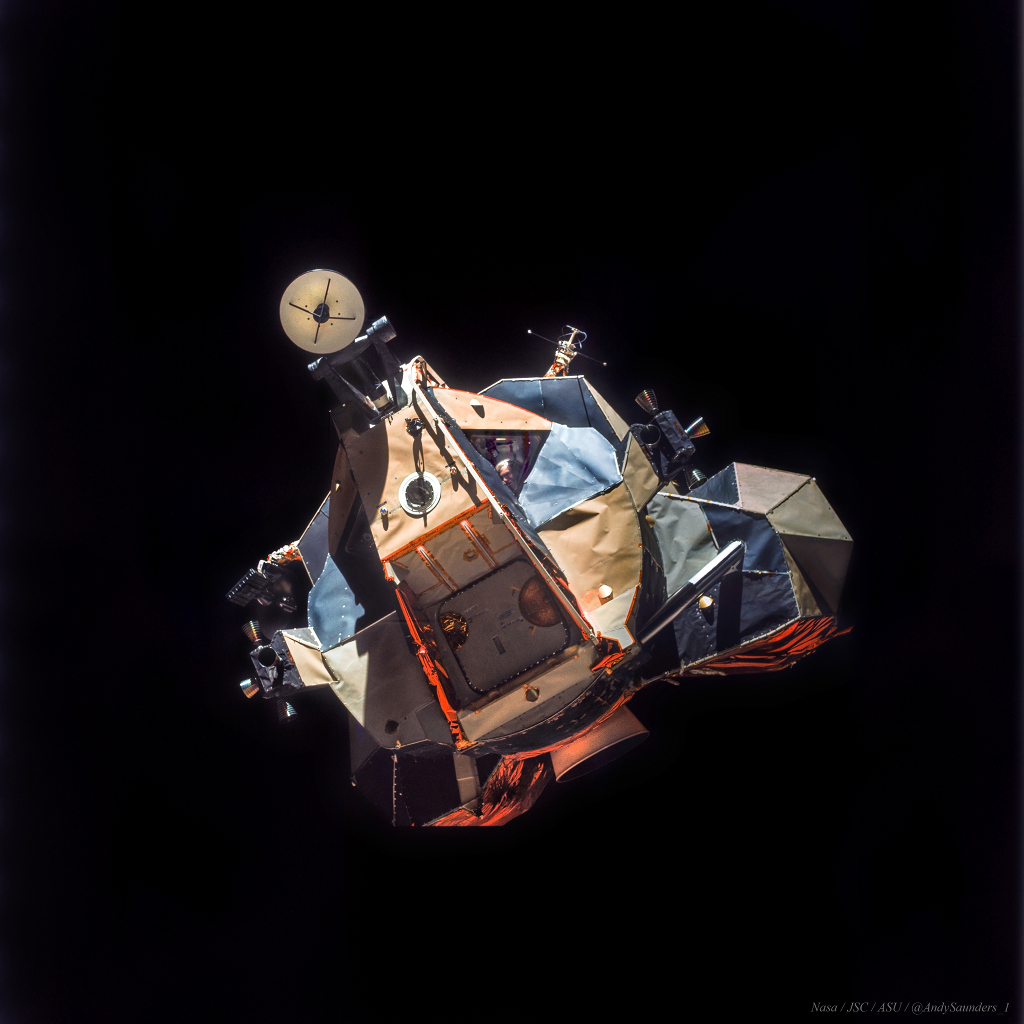
-
2022 September 26 All the Water on Planet Earth Illustration Credit: Jack Cook, Adam Nieman, Woods Hole Oceanographic Institution ; Data ...
-
2025 May 11 The Surface of Venus from Venera 14 Image Credit: Soviet Planetary Exploration Program , Venera 14 ; Processing & Copyri...
